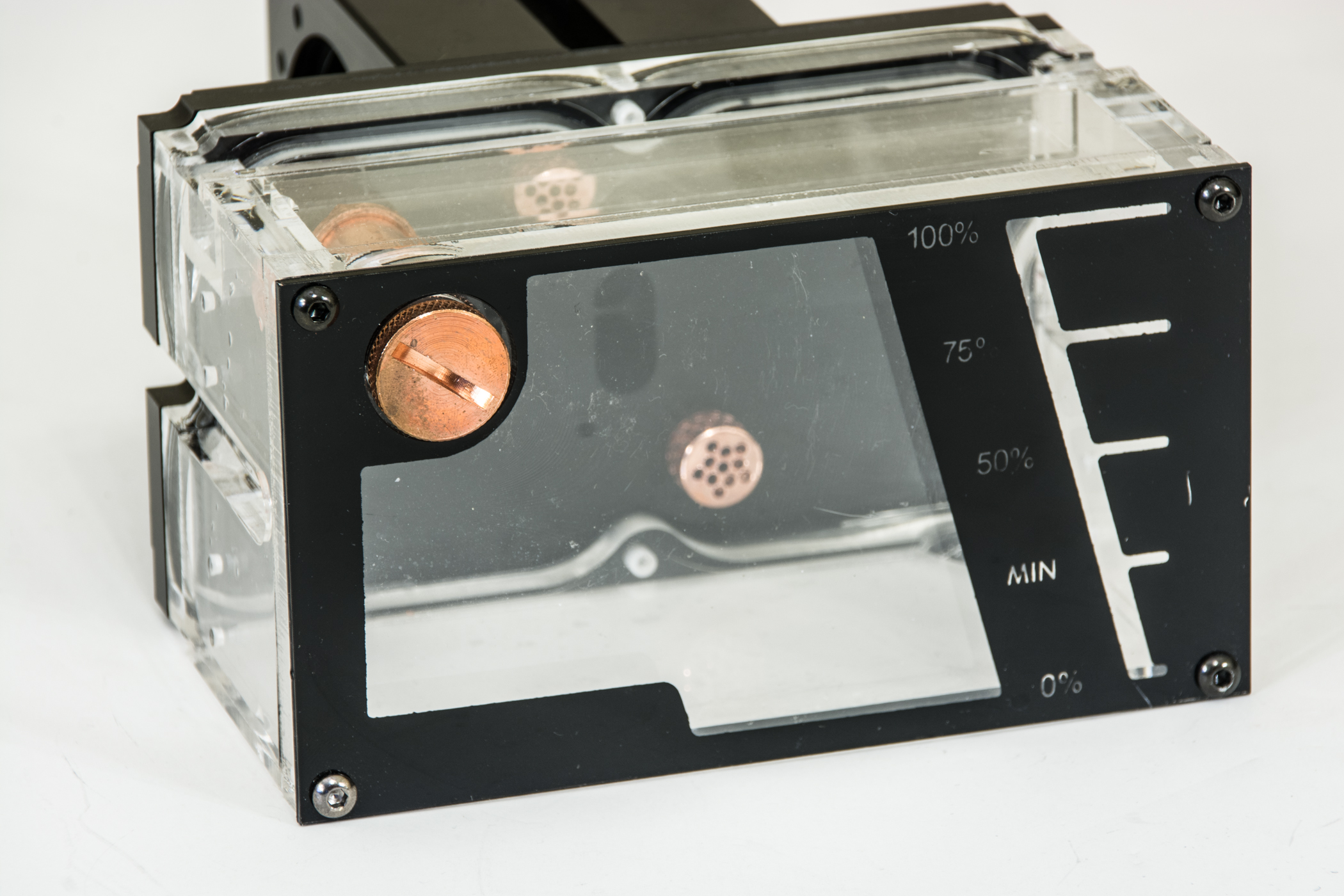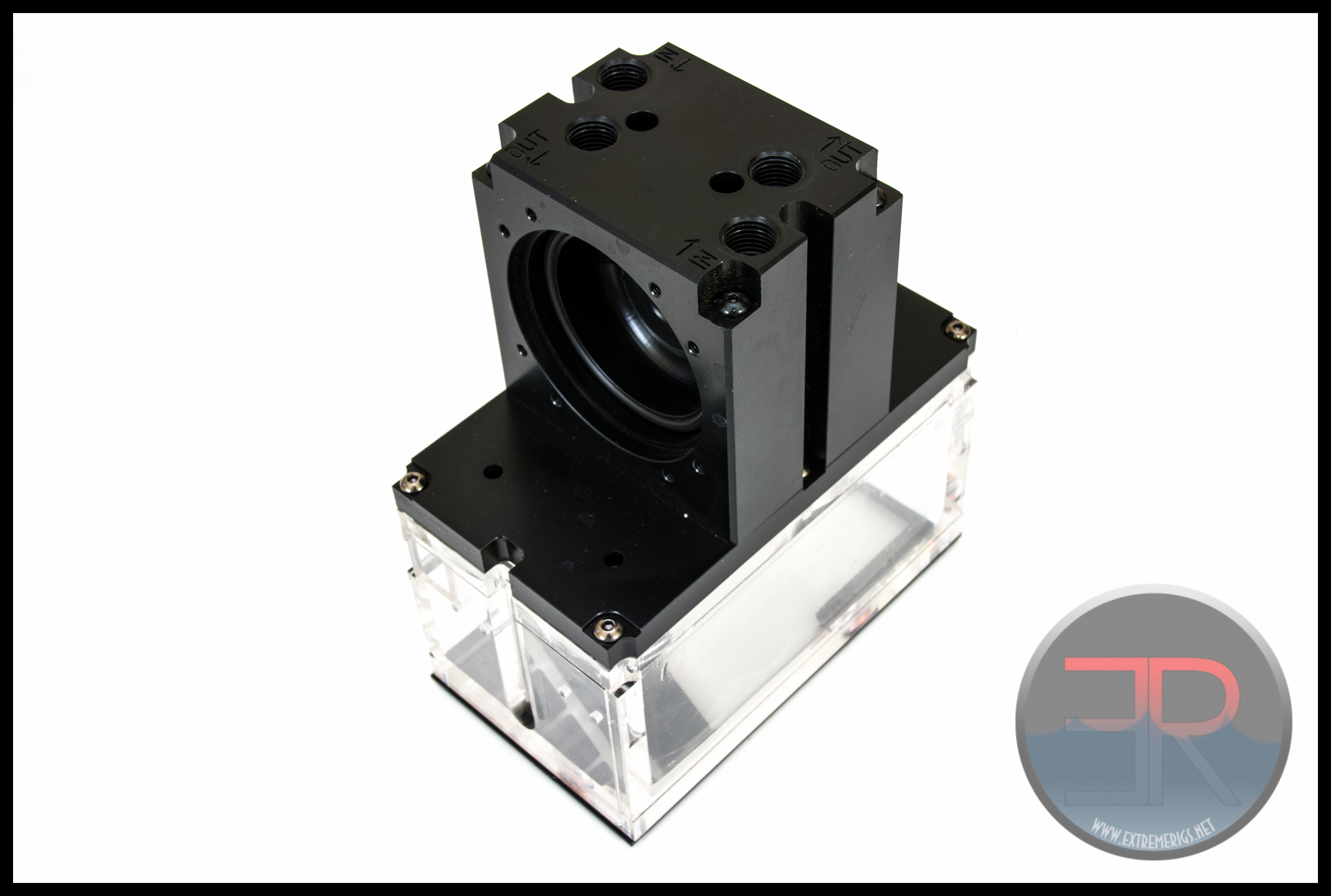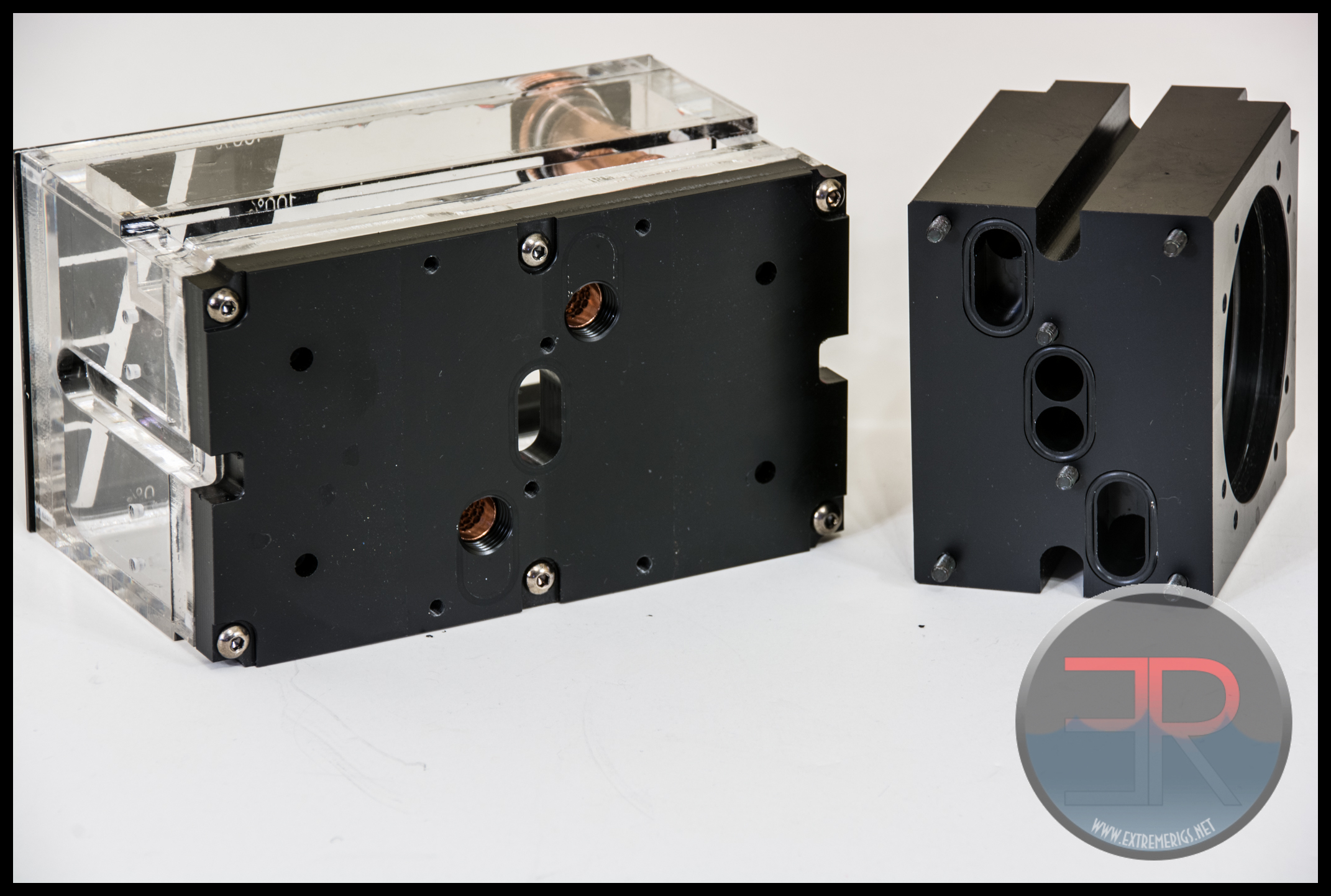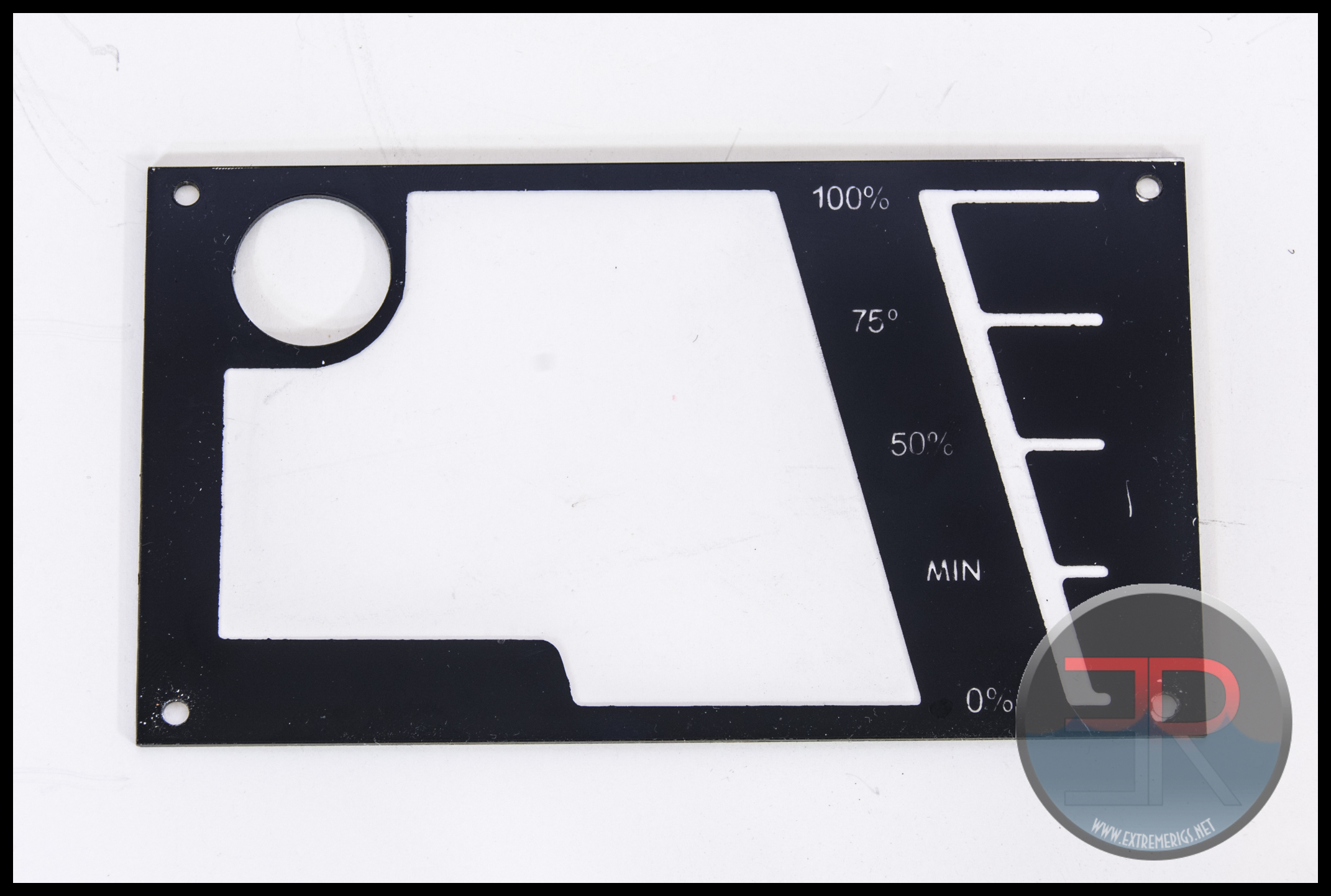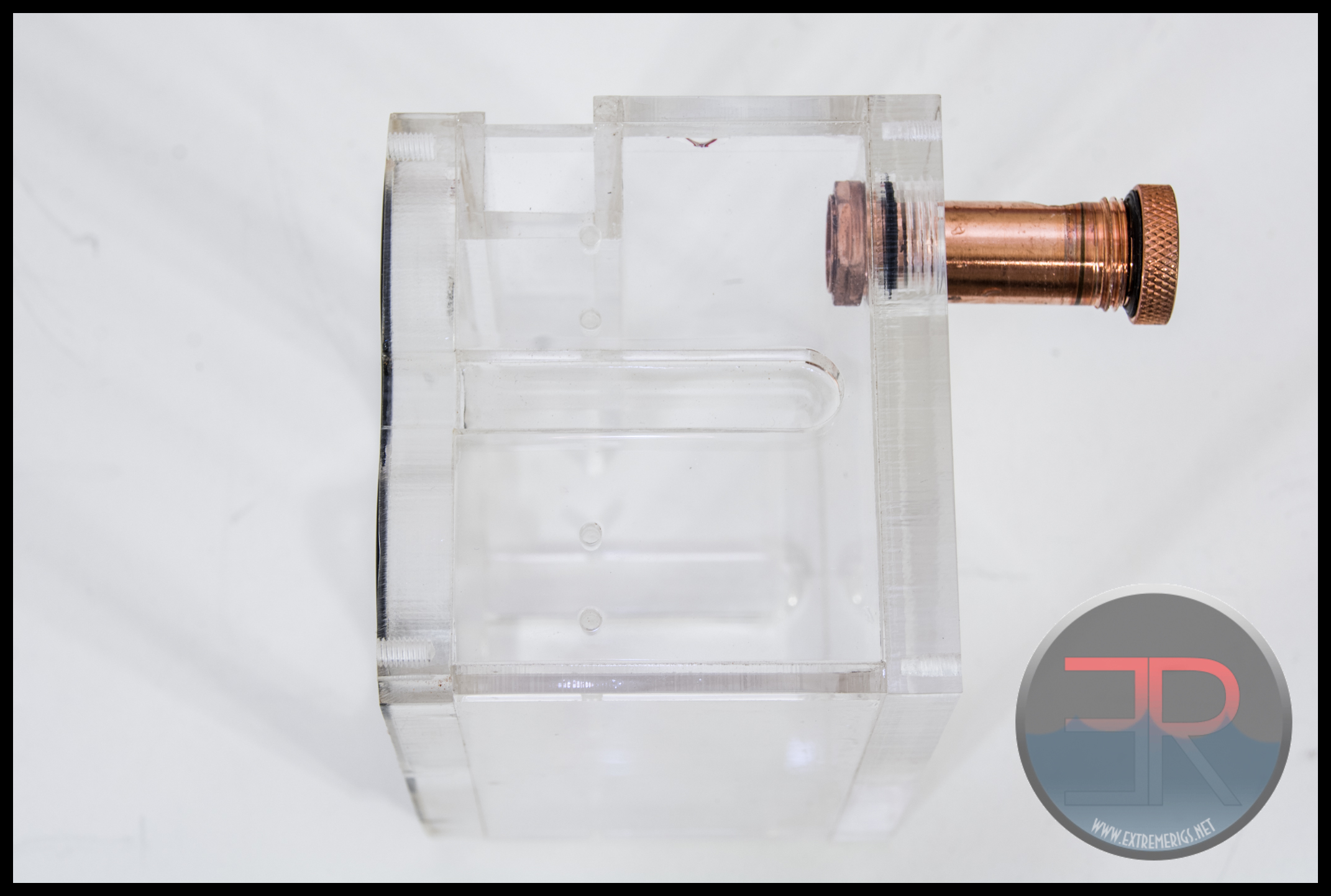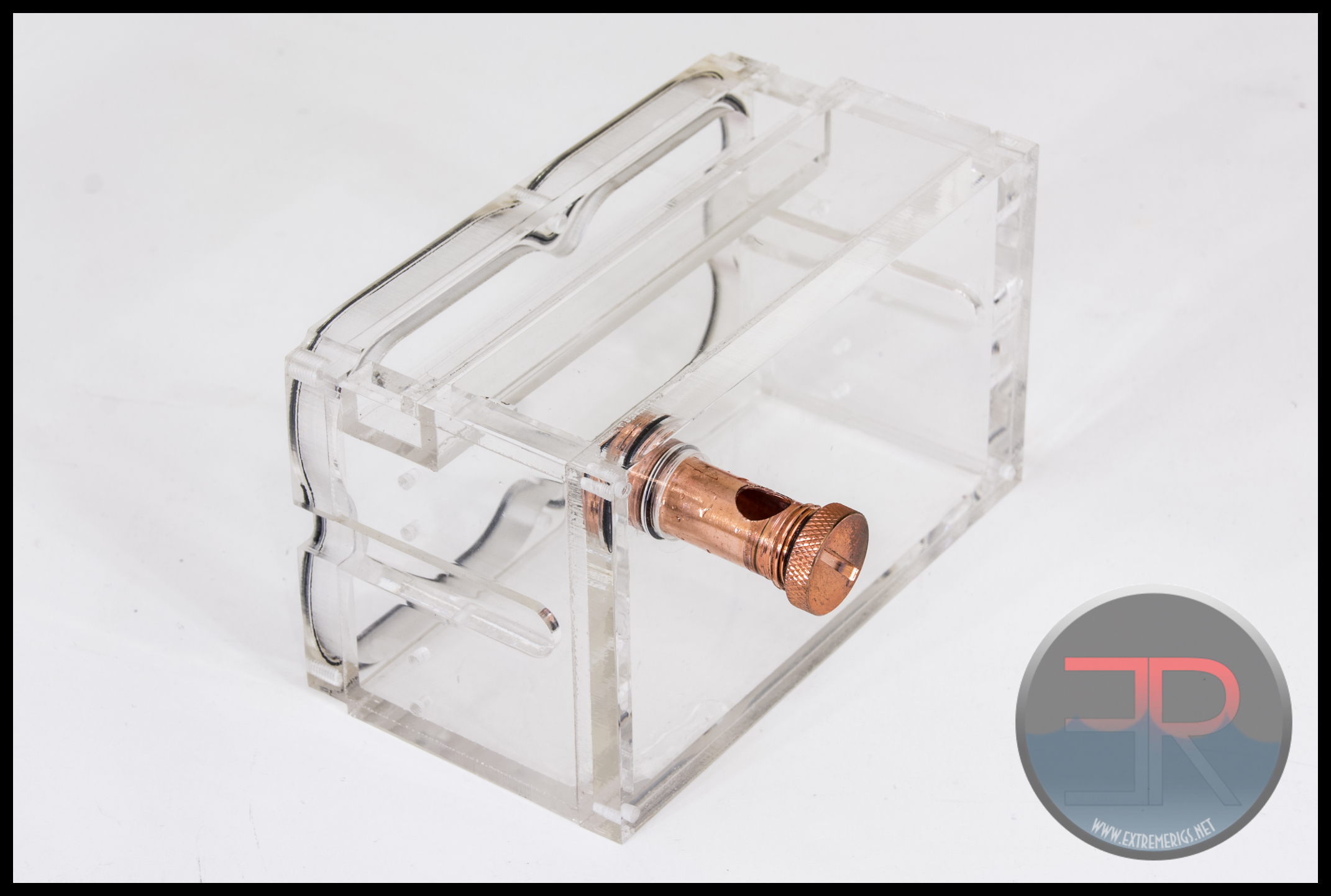The unit is composed of multiple parts:
The pump mount area is removable and is fixed with 6 long screws and seals with three o-rings and attaches to another acetal piece which forms the back of the reservoir itself:
Note that there are four holes drilled partly through the acetal back. They look like they are for LEDs but that would require this piece to not be made of acetal.
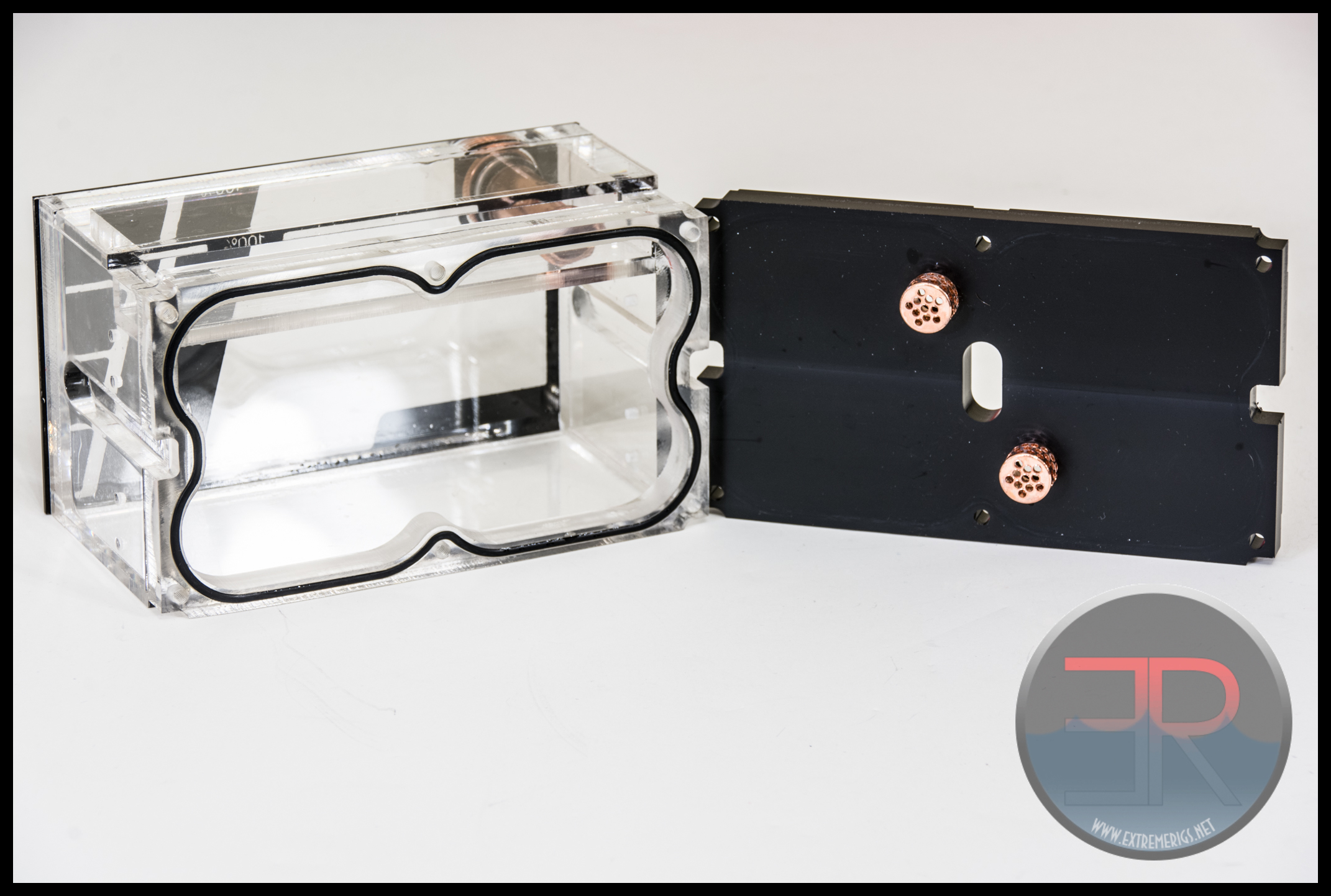
The copper pieces screw into the acetal and are designed to help separate bubbles from the return coolant. The rest of the body of the reservoir is made up of multiple glued pieces of acrylic. Glue is of course not our favorite element to use on reservoir construction. It may fail over time and requires good joins on multiple sides. This reservoir further complicates the construction by using more than the 5 pieces you might assume:
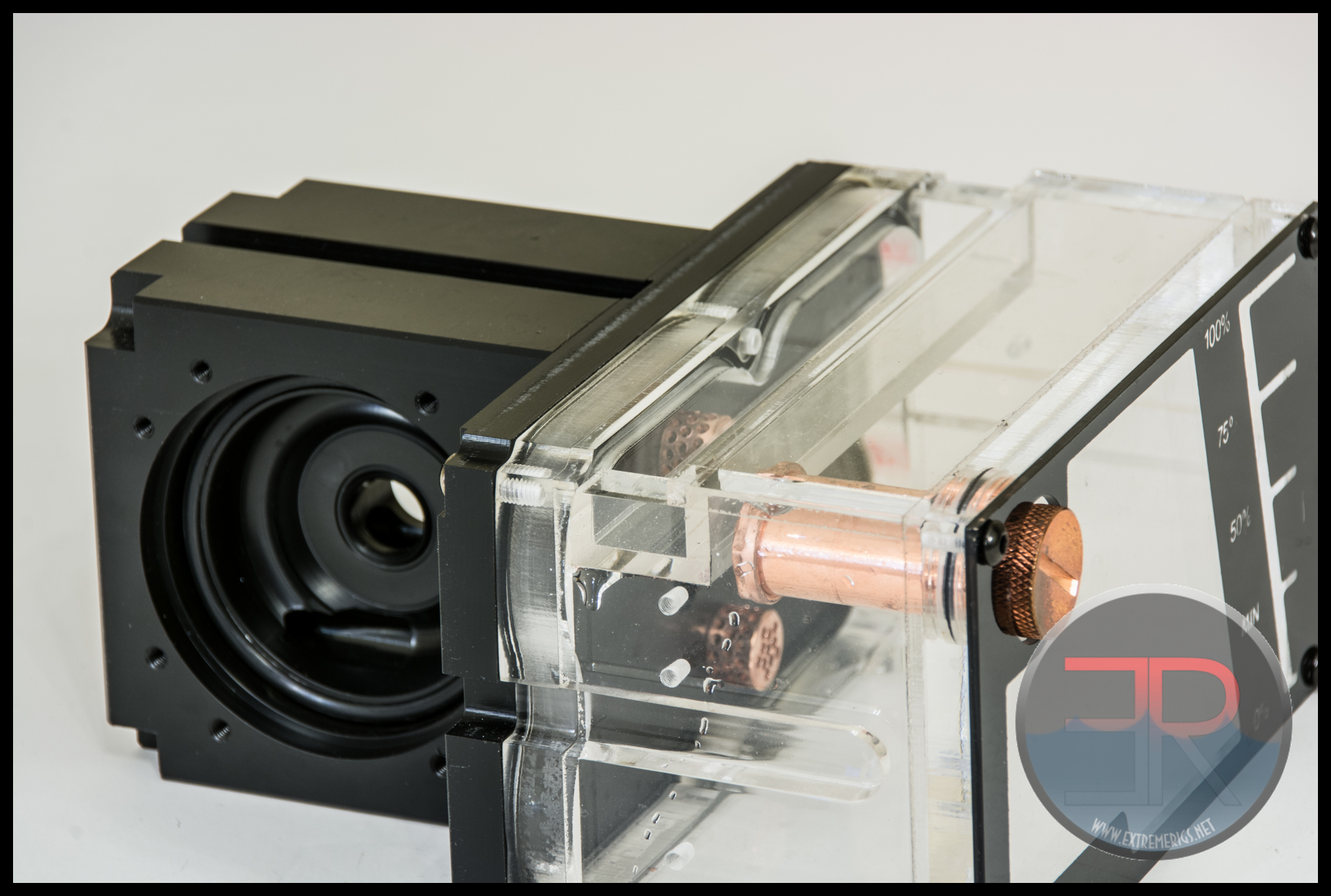 There is a bubble shield which require another three pieces of thinner acrylic to be glued together. In addition there is a back piece to the reservoir to give a flush mount to the o-ring and the acetal making a total of 9 pieces of acrylic and something like 22 joints.
There is a bubble shield which require another three pieces of thinner acrylic to be glued together. In addition there is a back piece to the reservoir to give a flush mount to the o-ring and the acetal making a total of 9 pieces of acrylic and something like 22 joints.
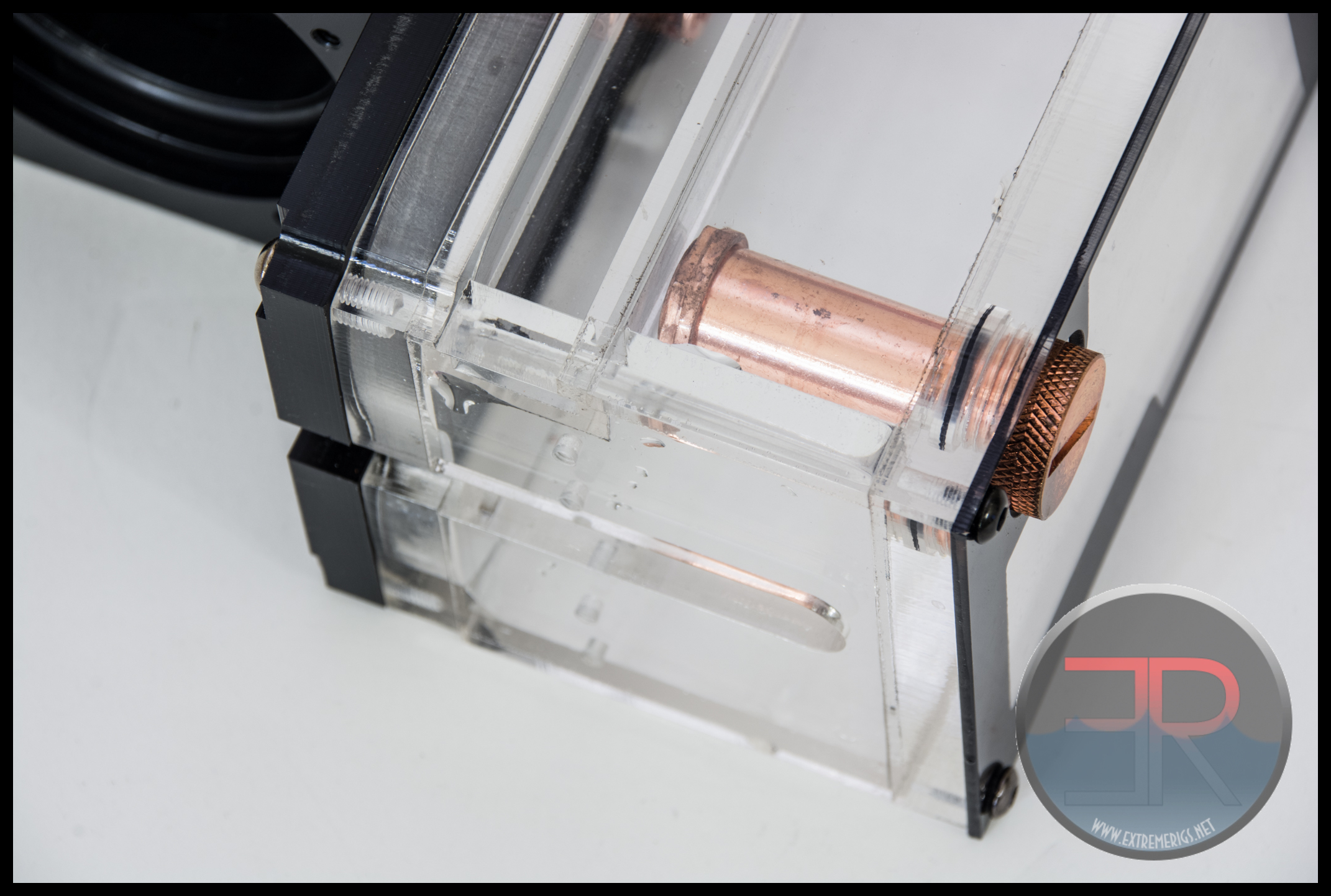
In addition the acrylic is drilled into and threaded so that screws can screw into in 18 places. Contrast this to the (albeit more expensive) Koolance reservoir that never glues or screws into the one piece of acrylic that seals the unit.
The faceplate is not as attractive either, it could have been cut out of Aluminum like Koolance or XSPC does, instead it’s printed on a piece of acrylic that end up giving a cheap look. The markings are ugly and the minimum level is actually below the input to the pumps.
The bleed valve is not fully removable. It does help to fill but only if you have the required and not included filling device. Personally I’d rather have two standard G1/4 fittings. The copper fitting is also not lacquered so it can and does tarnish over time.
The machining is of acceptable quality but the design is just quite simply poor. There are no options to break the reservoir into two units, nor to enable the pumps to run in series. The many glue joints are a known weakness that might fail over time, and the screw threads into the acrylic will be easy to strip.
So clearly it’s poorly designed and thought out, but what about it’s performance?







